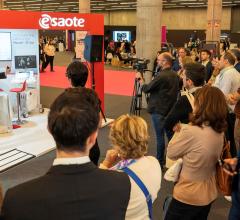
July 7, 2011 – The National Aeronautics and Space Administration (NASA)’s Ames Research Center and The Midura Laboratory selected ImageIQ to assist in their study of space flight-induced vascular alterations in the lower leg. ImageIQ will provide customized image acquisition and analysis for a vascular research study aboard NASA's final mission of the shuttle Atlantis. scheduled for July 8. The company provides imaging analytics software engineering and visualization services for research, medical device and pharmaceutical organizations.
ImageIQ will be using its extensive software library and preclinical imaging expertise to develop highly custom-tailored 2-D and 3-D imaging and image analysis techniques to produce objective and quantified data from the imaging work it will perform for the Midura Lab during this study. The study is a collaborative effort among NASA Ames, BioServe Space Technologies and Amgen that will evaluate a novel therapeutic countermeasure to prevent space flight-induced bone loss in mice. In addition to oversight, NASA Ames will provide the necessary funding to execute Midura’s investigation of lower leg vascular alterations resulting from space flight. The Midura Lab at LRI has a prior history of musculoskeletal research collaboration with NASA Ames. One of the Midura lab’s current research programs is funded by NASA (“Hypo-gravity Induces Vascular Atrophy Leading to Bone Loss”). N. Patrick McCabe, M.D., and Caroline Androjna, M.D., will be present at Kennedy Space Center for the shuttle landing in order to retrieve the study specimens for the Midura Lab.
The Midura Lab will leverage the decades of preclinical life science research experience that the ImageIQ team garnered from its tenure inside Cleveland Clinic, where it existed as the Biomedical Imaging and Analysis Core for the past decade.
“We welcome the opportunity to work with NASA and the Midura Lab to support such a unique and exciting musculoskeletal study,” said Amit Vasanji, chief technology officer at ImageIQ. “The complexity of vascular remodeling research will benefit from a finely-tuned and sophisticated approach to image analysis and visualization. ImageIQ provides a unique combination of preclinical imaging, image analysis and software engineering expertise that will greatly enhance the NASA research study associated with shuttle Atlantis’ final voyage. We are excited to apply our proprietary approach to orthopedic image acquisition and analysis developed over the past 10 years to provide highly quantitative data in the shortest amount of time for the Midura Lab at Cleveland Clinic.”
“The complexity of our vascular remodeling research requires a finely-tuned and sophisticated approach to image analysis and visualization. As my lab conducts more and more complex musculoskeletal investigations, the use of custom-tailored imaging and image analysis will continue to be an indispensable tool to produce objective data of high precision and rigor. The only cost-effective and thorough way to analyze large volumes of multidimensional image data is through automated and custom-tailored software,” said Ronald Midura, Ph.D., full staff in the department of biomedical engineering at LRI.
For more information: www.Image-IQ.com, www.lerner.ccf.org/bme/midura


 August 27, 2024
August 27, 2024 








